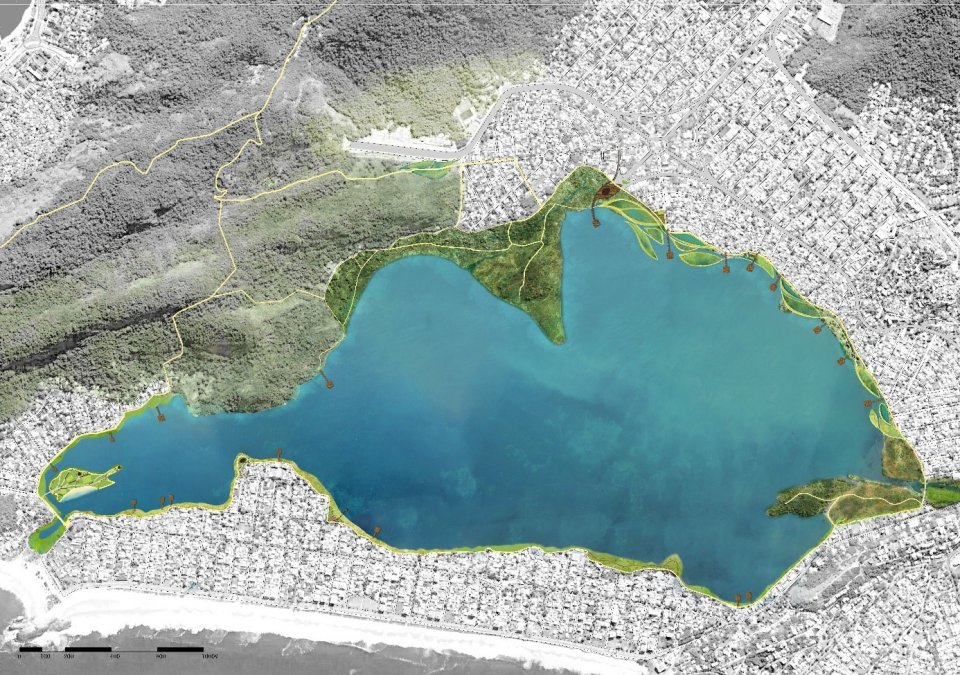
RENATURALIZE THE LAGOON AND DEVELOP A NEW MODE OF SUSTAINABLE DEVELOPMENT.
Project introduction:
RENATURALIZE THE LAGOON AND DEVELOP A NEW MODE OF SUSTAINABLE DEVELOPMENT.
The Parque Orla de Piratininga project is one of the projects under the "urbanization" theme of the Sustainable Oceanic Region Program of the Municipality of Niterói, which aims to revitalize the region around the Piratininga lagoon through the implementation of a water quality management system and pollution treatment in an ecological park aimed at integrating the existing landscape and biodiversity into an ecotourism plan to preserve the socio-economic and environmental conditions necessary for the development of the region. Since the beginning of the project, we have participated in the customization of the overall project framework. Providing long-term development suggestions to ensure that the project tasks meet the needs of climate change mitigation.
CREATION OF ECOLOGICAL HABITATS FOR BIRDS
The ornithological park is composed of several bodies of water of different depths and salinity to attract migratory and sedentary birds.
The aim is to create favorable places for the birds to feed and nest, which will keep them in place.
In order to restore its original biodiversity, the following actions have been taken:
The first steps to be taken are the remodeling of land and sea areas in order to restore ecological habitats.
It is necessary for the nesting of birds in the form of various bodies of water and small islands.
The reorganization of the hydraulic functioning of the artificial lagoons via gates will allow to adapt the water levels and the various qualities of water, with many specific works:
-diversion of treated freshwater inlets,
-arrangement of passes stabilized with the sea,
-redevelopment and division of lagoons,
-Dredging of part of the water surface to create islands and varied meadows along the banks of the lagoons.
Surface :
-Lagoon : 720.000 m².
-Ornithological Park : 180.000 m².
The reorganization of the hydraulic functioning of the artificial lagoons via gates will allow to adapt the water levels and the various qualities of water, with many specific works:
-diversion of treated freshwater inlets,
-arrangement of passes stabilized with the sea,
-redevelopment and division of lagoons,
-Dredging of part of the water surface to create islands and varied meadows along the banks of the lagoons.
- Developing climate change adaptation; improving risk management and resilience
- Increase infiltration / Water storage
- Reduce flood risk
- Increase Biodiversity
- Increase quality and quantity of green and blue infrastructures
- Increased cultural richness and biodiversity
- Enhancing sustainable urbanisation
- Increase willingness to invest in NBS
- Social learning about location & importance of NBS
Corporação Andina de Fomento (CAF)
- 6. Clean Water and Sanitation
- 13. Climate Action


